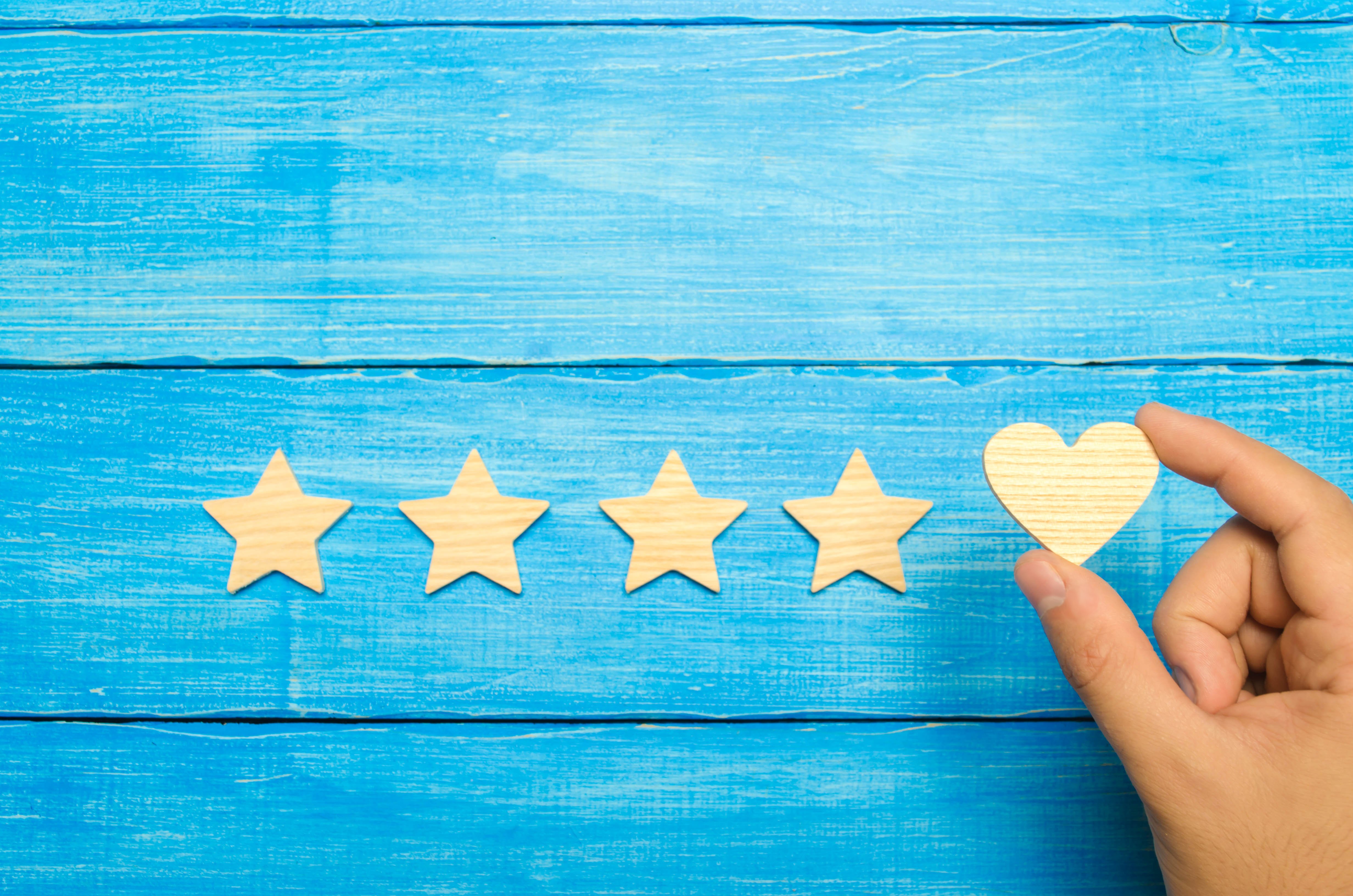July 20, 2022
 by Dwayne Charrington / July 20, 2022
by Dwayne Charrington / July 20, 2022

Loyal customers weave a story for your business that no other stakeholder can.
One of the all-time favorites, Apple, is at the forefront of customer loyalty. Apple's loyalty rates continue to soar to over a staggering 90%, and with the most loyal smartphone customers in the US. What drives Apple's ever-growing customer base? Its commitment to delivering a superior customer experience.
Who doesn't like a loyal customer base? Every business dreams of having loyal customers. But what if you don't have a product lineup like Apple?
Earning customer loyalty is more about providing the most out of your product than having a huge range of products. You can easily attract and win customers with a few simple strategies.
Customer loyalty impacts various aspects of a business, such as revenue, brand image, budget allocation, and product roadmaps. Having a loyal customer base is essential to building a successful business, as your customers are your prime advocates and help generate positive sentiment around your business.
Understanding customer loyalty and working toward it goes a long way in building long-term relationships.
Let's find out how.
Customer loyalty measures the likelihood that customers will stay with your company over the long term and keep coming back to you.
Loyal customers support your revenue efforts as your strongest promoters. You can use their positive perception of your brand to help you succeed in many ways.
But first, you need to give the customers something to keep them coming back – competitive pricing, quality service, better perks than your competition, and better product value. Start by identifying and tracking these loyal customers with a good customer loyalty platform to ensure they have the best possible experience while interacting with your business.
The first step in establishing a working customer loyalty model is identifying what factors drive the positive relationship between you and your loyal customers. It will help you target future customers with personalized strategies to encourage and build customer loyalty.
These customers are genuinely satisfied with your products and services and perfectly fit the customer loyalty definition. Such customers see great value in your products, such as superior services, better features, emotional connection, and innovation. Value-based customer loyalty is something every brand desires in today's competitive marketplace.
When you have happy customers on your page, you can turn them into promoters and grow your business. They also act as a source of recurring revenue. It’s essential to have an effective program to engage with satisfied customers and reward them for their loyalty.
Pricing can significantly impact customers' purchasing decisions as there’s a customer segment loyal to your business based on pricing. These customers buy from you because you offer the best price among the competition.
And there lies the problem. They will quickly move to the next best deal, making retaining such customers a major challenge.
But this also means you can win over customers from your competitors with better pricing. The best way to target such customers is through price analysis. You can analyze and restructure the current pricing model so more customers can buy your products.
Reward-based loyalty helps create a symbiotic relationship between you and your customers. Customers do business with you and collect loyalty points (cashback) that can be redeemed on their next purchase. The cycle continues.
A loyalty rewards program can be a powerful motivator to bring customers back as it provides a two-pronged effect:
Another benefit of a customer loyalty program is upselling and cross-selling to existing customers. For example, you can set a minimum purchase value to use the loyalty points to increase the cart value and the average order value.
If there's anything more enticing than price, it's a discount offer. Discounts and freebies can attract many potential buyers who don't just make regular purchases but often show up when you're offering a discount or making a sale. Because they're motivated by offers, they don't share loyalty to any particular brand.
One of the best ways to target discount-based loyal customers is with email segmentation and SMS alert campaigns. Send updates about upcoming sales or discounts to encourage them to revisit your site.
You can also use customer behavior to increase purchase value. For example, combine popular products with inventory to create bundles and offer items at discounted prices.
Customer retention affects your acquisition budget, which would constantly increase and lower profits if customers are not willing to buy from you. You may not be able to build long-term customer relationships and lose brand credibility.
Customer loyalty leads to repeat purchases and is a source of constant revenue streams. It helps forecast revenue for months, quarters, or even years. You can allocate a budget to campaigns, resources, and other critical areas with the right forecasts.
Customer loyalty opens the door for many retargeting opportunities. Sometimes, customers come back because they love your product; in other cases, because of better prices. Offer discounts or complementary products to encourage these customers to increase the total order value and earn higher profits.
Ninety-two percent of customers are more likely to purchase a product after reading a trusted review.
Not only online reviews, positive social media posts, comments, and feedback on third-party review sites can help spread positive word of mouth about your brand. Customer loyalty enables you to identify potential customers who can be advocates of your positive brand equity and help build brand awareness and credibility.
Some ways to record customer feedback:
When tweaking your products, testing a new update, or collecting feedback, you can count on your loyal customer base to share their insights. They are your core audience and actual product users.
And since they think positively about your brand, they won't mind spending time completing surveys. This increases the response rate and provides a clean customer record.
The only caveat is that some users might not provide actual feedback because they like your brand, which hurts data reliability. To smoothen data outliers, you can easily circumvent this challenge by maintaining a larger sample size and measuring the results.
Customer loyalty comes in all shapes and sizes. Also, loyalty is an emotion that makes it harder to quantify. Luckily, you can use some simple metrics to get an idea of your customer base's loyalty. Use these to set a baseline for your strategies and measure the effectiveness of your loyalty campaigns.
NPS is a globally standardized indicator for measuring long-term customer satisfaction and loyalty. It's also pretty easy to measure.
Design an NPS survey > Add the standard NPS question > Collect the rating > Calculate the score > Voila!
The standard NPS question asks the respondent to rate the likelihood of their brand message being communicated to family and friends on a 0 to 10 scale.
You can also add follow-up questions to explore the reasons for the respondent's response.
Qualitative NPS data can give valuable insights into what is and isn't working for your customers to help build customer loyalty. You can even target each segment with personalized campaigns to retain them.
NPS scores provide you with tons of benchmarking data to compare your score against industry standards.
If you have loyal customers, they will stay, and that's what CRR measures. It tells you how many customers you retained in a certain period.
CRR = (Number of customers at the end of a period - Number of customers acquired during that period) / Number of customers at the beginning of the period x 100
Once you have a CRR, you can find customers' drop-off points on their journey and plug those leaks to increase customer retention. A 5% increase in customer retention rate can increase your profits by 25% to 35%. By retaining more customers, you can drive higher customer loyalty and revenue.
Customer churn rate is the opposite of retention. It provides the data on the number of clients you lost in a given period.
CCR = [(Customers at the start of the interval + Newly acquired customers during that period - Customers at the end of the period) / Total customers during that period] x 100
A high CCR means a significant number of customers are leaving your services. This can directly impact your customer acquisition costs.
For example, you acquired two customers in one week, and your acquisition cost per customer is €100. Suppose one of the customers leaves the company before you can get back the $100 you spent on acquisition.
Now you're under pressure to make extra profit with the second customer. If unchecked for a long time, customer churn can result in significant budget cuts and losses.
Customer lifetime value calculates the total value of customers over their entire relationship term with your brand.
It’s the estimated total profit you can expect from a customer during their time with you (i.e. from the time of acquisition until they leave you). Here's the easiest way to calculate CLV:
CLV = Average order value x Average customer lifetime
Calculating CLV offers several advantages:
Like the NPS, the CLI is a standardized measure of long-term customer loyalty. This metric considers your customer base's brand endorsement, repeat purchase, and cross-selling opportunities.
Each question is rated on a 6-point scale. The CLI score is the average of these three scores.
With regular customer loyalty surveys like NPS and CLI, you can track the effectiveness of your customer retention strategies. This reduces the manual work of going through each answer.
Another customer loyalty metric that tracks whether customers are willing to buy different products from the same company. It measures how many customers bought multiple products compared to those who only bought one.
The upsell ratio considers two scenarios: selecting higher-value variants of the same product (upselling) and adding complementary products to the shopping cart (cross-selling).
Upselling ratio = Customers who bought more than one product / Customers who bought only one type of product
A high upsell ratio indicates that more customers are happy with a product and want to try other products. From a monetary perspective, exploring successful upselling and cross-selling opportunities generates higher average order value, more revenue, and better customer lifetime value. So, keep this ratio as high as possible.
These beacons can point you to your avid followers, potential brand ambassadors, and dissatisfied customers. It's unsolicited feedback that real users leave you, making it a treasure trove of valuable insights. You can monitor posts, comments, reviews, and hashtags to measure customer brand loyalty across social media platforms.
Now that you have the metrics to measure and give you an idea of customer loyalty, it's time to start building a loyal customer base.
Set up systems to rope casual customers into your loyal customer base. Here are some strategies you can use to increase customer loyalty over time.
Ever redeemed reward points on your airline account or credit card? Then, you already know how vital customer loyalty programs are. As explained earlier, incentives and rewards motivate customers to keep purchasing as they feel valued and recognized by the brand.
The benefits of rewards don't end here. You can combine loyalty programs with feedback programs to gather customer analytics on behavior and demographics. A happy customer will likely fill out a survey or feedback form when receiving reward points or redeeming them.
Feed these insights into your marketing and customer success strategies to improve user experience and retention. You can mix and match different customer loyalty programs to target different customer types and maximize return on investment (ROI).
Customer service is not just a department. It's part of everyone's job at a company. Over 90% of customers think customer service is essential to their brand choice and loyalty.
Additionally, 89% of customers are more likely to make another purchase after a good customer service experience. Many other studies show that a great experience is critical to building and fostering customer loyalty.
Here are some ways to ensure a hassle-free customer service experience.
It's great to have seamless service points. But why wait for customers to reach out to you when you can proactively ask them about their issues and problems? It makes them feel heard and helps you gain feedback on their experiences.
Closing the feedback loop is a top strategy to improve customer retention. Here are some ways customer feedback can build customer loyalty.
Targeted feedback can assess customer issues, expectations, and needs, helping deliver optimal solutions and turn them into loyal customers.
You can use every strategy in the book to encourage customer retention, but it's all for naught if you don’t connect with your customers. Communication gaps can increase the churn rate.
Miscommunication affects both existing and potential customers. They inevitably get frustrated and move to better shores (your competition). This is why make sure you streamline all your communication channels.
Personalizing experiences is no longer an option – it’s a necessity. Over 65% of people want their brand experience and interactions to be personalized. Additionally, 60% of consumers say they are more likely to make repeat purchases after a personalized experience with a brand.
When you combine repeat purchases with other strategies like loyalty programs, excellent service, and seamless communication, you have the recipe for building a loyal customer base.
Here are some tips on offering your customers the right personalized experience.
You can opt for various loyalty programs to encourage customer loyalty. Here are some great examples.
The points-based rewards system is one of the most widespread programs in the world, where customers receive points for every purchase. These points are converted into rewards such as freebies, discounts, vouchers, or other offers.
For example, Starbucks' points-based rewards allow you to earn stars when you purchase coffee that can be redeemed for free food and beverages on later purchases.
Some tips to start an effective points-based loyalty program:
The referral-based loyalty program is a great way to attract new customers while retaining existing ones. The customers who sign up for the program are given a unique referral code. They earn points or rewards when other customers shop or sign up on a site using their referral code.
The rewards system can be single or multi-tier. In a one-tier system, customers receive equal points for each referral. In a multi-tiered referral system, the rewards increase as the number of referrals increases.
The value-based loyalty program requires you to identify customers' core beliefs and values and reward them by showing interest. These programs offer non-monetary rewards such as charity or donation. This allows you to move beyond a financial relationship and connect with customers deeper.
For example, TOMS’ “Improving Lives Campaign” commits to providing shoes, vision, water, and other services to people in need with every customer purchase.
This program requires customers to pay to purchase a membership before accessing benefits such as exclusive offers, VIP lounge access, and early access to sales or products. You can charge a one-time fee or start a subscription-based loyalty program.
For example, Amazon Prime is a subscription-based program that gives you access to the following benefits:
You can identify factors your customers want to bypass and offer them as benefits of your paid loyalty program. If the membership cost is justified, more people will enroll in the program.
Customer loyalty isn’t difficult to build. It takes little hard work and a focused approach. Chances are, you're already using one or more of the methods outlined to add loyal customers to your list.
You can start by analyzing the current strategies' impact on various metrics such as NPS scores and CLV. You can then use the feedback data to find improvement areas to optimize customer journeys. From here, you can take it to the next level by introducing new ways to expand your reach, such as introducing a new loyalty program.
If you haven't invested in a loyalty program yet, it’s time you do. After all, loyal customers are one of the biggest revenue generators.
Is customer churn putting you under a lot of pressure? Use customer retention marketing to prevent customer churn and retain customers effectively.
Dwayne Charrington is a technical writer for ProProfs Help Desk. He possesses hands-on experience in writing for the customer service industry. He shares insights on industrial challenges, customer service trends, and how businesses overcome related challenges.
You’ve optimized your landing pages, fine-tuned your email flows, and tested your ad creative,...
 by Sam O'Brien
by Sam O'Brien
If there's one thing working in marketing has taught me, it's that keeping existing customers...
 by Harshita Tewari
by Harshita Tewari
Customers love the idea of a good deal, especially if it’s exclusive.
 by Zsuzsa Kecsmar
by Zsuzsa Kecsmar
You’ve optimized your landing pages, fine-tuned your email flows, and tested your ad creative,...
 by Sam O'Brien
by Sam O'Brien
If there's one thing working in marketing has taught me, it's that keeping existing customers...
 by Harshita Tewari
by Harshita Tewari


